► All-new Hyundai Kona Electric SUV driven
► Loads more space, bigger driving range
► Grown-up tech, but not many thrills
The second-generation Hyundai Kona Electric has grown up. This is good and bad, as in some respects it acts like an overly fussy parent, and in others it simply gives you a more mature experience. But above all else it remains a solid choice of small electric SUV. Especially now that the maximum driving range is up to 319 miles per charge.
The styling remains a little on the wacky side, being sleek in general then suddenly diverging into weird shapes and angles at the extremities. But you can’t see the outside from the inside, and the Kona Electric’s cabin is largely a pragmatic success. The most welcome news for current owners is likely to be the additional space – interior room is vastly improved here over the original version, and the boot is bigger, too.
So far, so sensible. Perhaps the available tech will win us all round.
Hit us with the stats
There are two battery sizes for the Kona Electric, each combined with a specific motor output: the smaller 48kWh version gets a 154bhp motor, while the larger 65kWh model enjoys 215bhp. The difference is enough to knock a second off the 0-62mph time – the faster car making it in 7.8sec – but both motors produce 188lb ft of torque.
You’ll need the big battery for that 319-mile range headline, but even the smaller variant claims 234 miles WLTP. Not that Hyundai is expecting to sell many of the latter, as it’s only available on the entry-level trim.
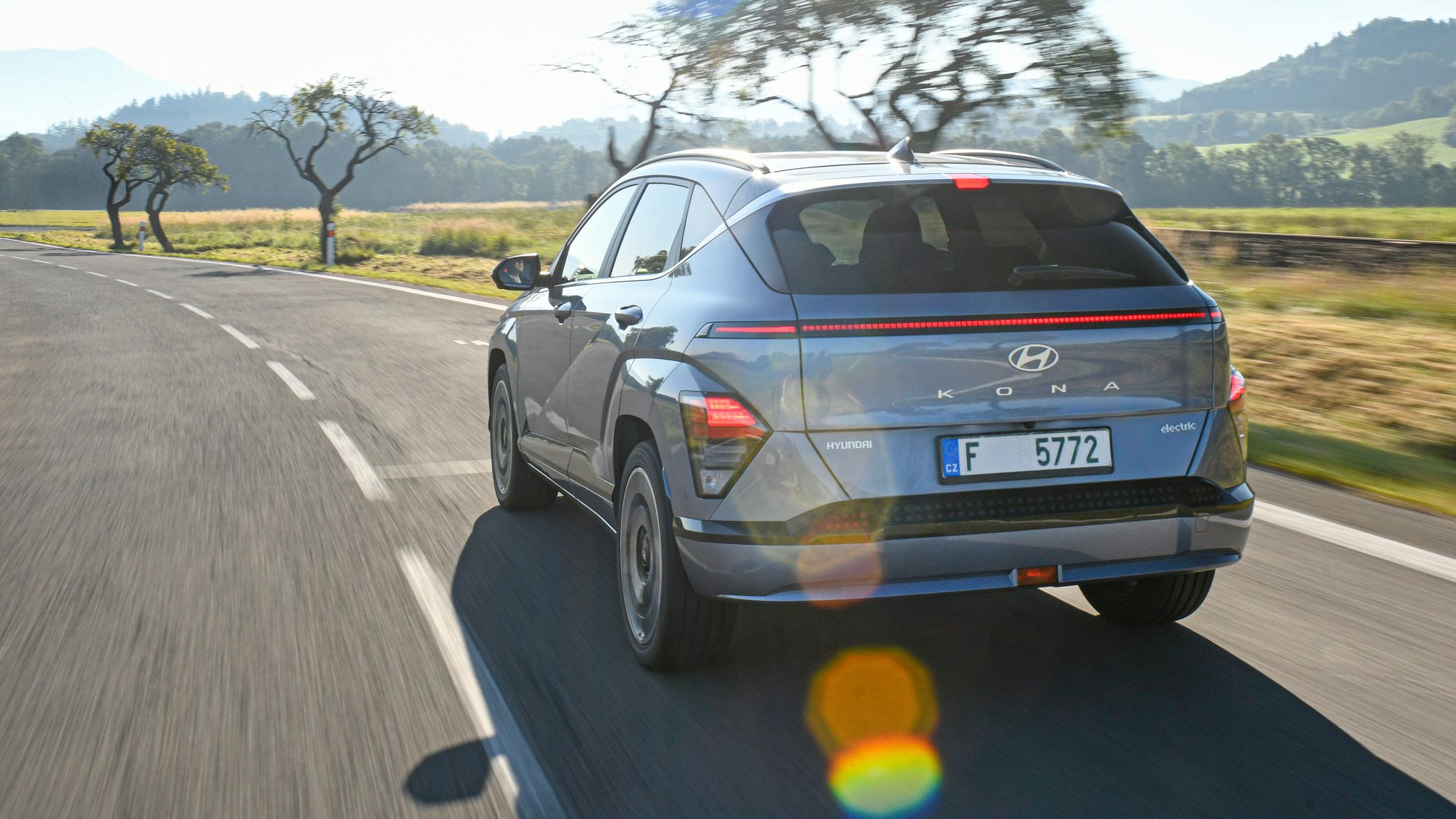
Charging time is limited by the maximum charging power, which is 102kW at best (74kW for the smaller battery). So it still takes 41 minutes to go 10-80 per cent on the public charging network. Your single-phase home wallbox will need 6-8 hours for a full charge.
Is ‘more mature’ actually a good thing for the Kona Electric?
Yes, as it’s shorthand for better ride comfort and refinement. This is a relaxed, undemanding driving environment now, capable of covering lengthy distances on a variety of roads in a very easy-going manner. The wheelbase is 60mm longer, which helps.
Bumps are felt but well-isolated without the body control going all to pieces at the first sight of a corner. The second-gen Kona makes greater use of high strength steels and was developed as an EV first – meaning it was then adapted for internal combustion second, rather than the more common other way around. The additional powertrain weight isn’t a burden in the same way as a result.
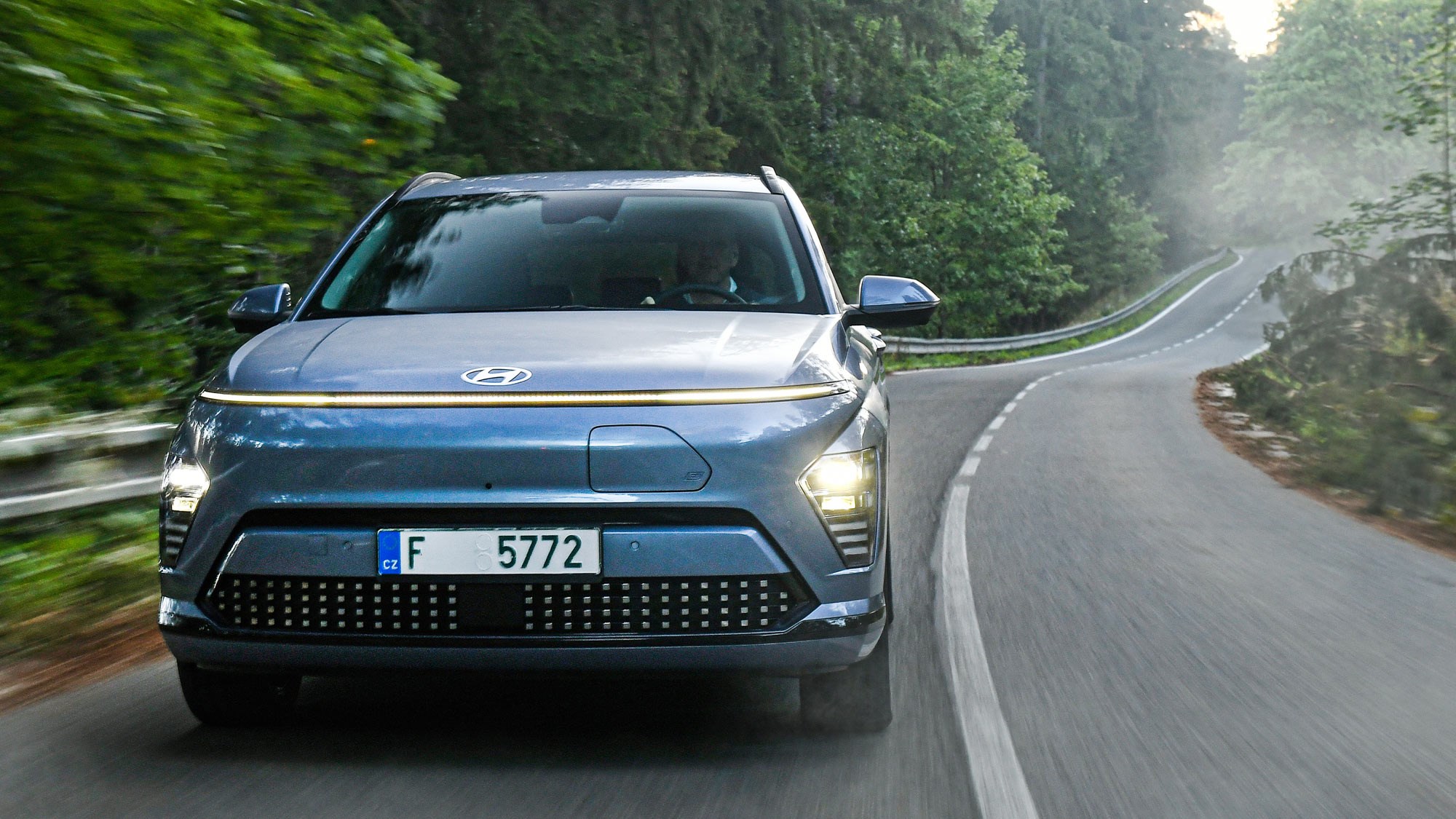
It very much comes across as a cruiser, happy to lope along rather than urging you into action. But though the steering is light and a little remote, the Kona Electric is deceptively handy in the corners. Body roll is measured rather than excessive and you can confidently spear through multiple direction changes without alarming repercussions. Turn-in late and hard, and the front end responds with surprising dexterity rather than attempting to plough straight on over the outside wheel.
It’s not as immediately agile feeling as the original, but nor is it as scrappy and binary either. Though we’d like a little more feedback through the steering, for most buyers – and their families – it all seems neatly judged.
Performance from the 215bhp motor is certainly adequate, with all the assured and predictable responsiveness you get from a well calibrated motor and single-speed transmission meaning you’ll never have doubts about making it into that gap. Similarly the Kona’s new one-pedal driving characteristics are an EV boon. You can muck about with the regen levels via paddles on the steering wheel if you must, but the adaptive ‘i-Pedal’ system saw us only rarely using the friction brakes in regular driving.
So what’s overly fussy about it?
It likes to beep at you rather more than seems entirely necessary. Stumble over the speed limit, and you’ll know about it, for instance, while the new Driver Status Monitor isn’t going to go down well with everybody.
This is a camera pointed at the driver’s face, watching not only for signs of fatigue but also that you’re paying proper attention. Trouble is, sometimes it makes alert noises when you’ve got your head turned looking at traffic. It also gets upset if you put your hand over part of your face. And it thought we needed to stop for coffee less than two minutes into the drive (but perhaps that’s nine-month-old baby lag for you).
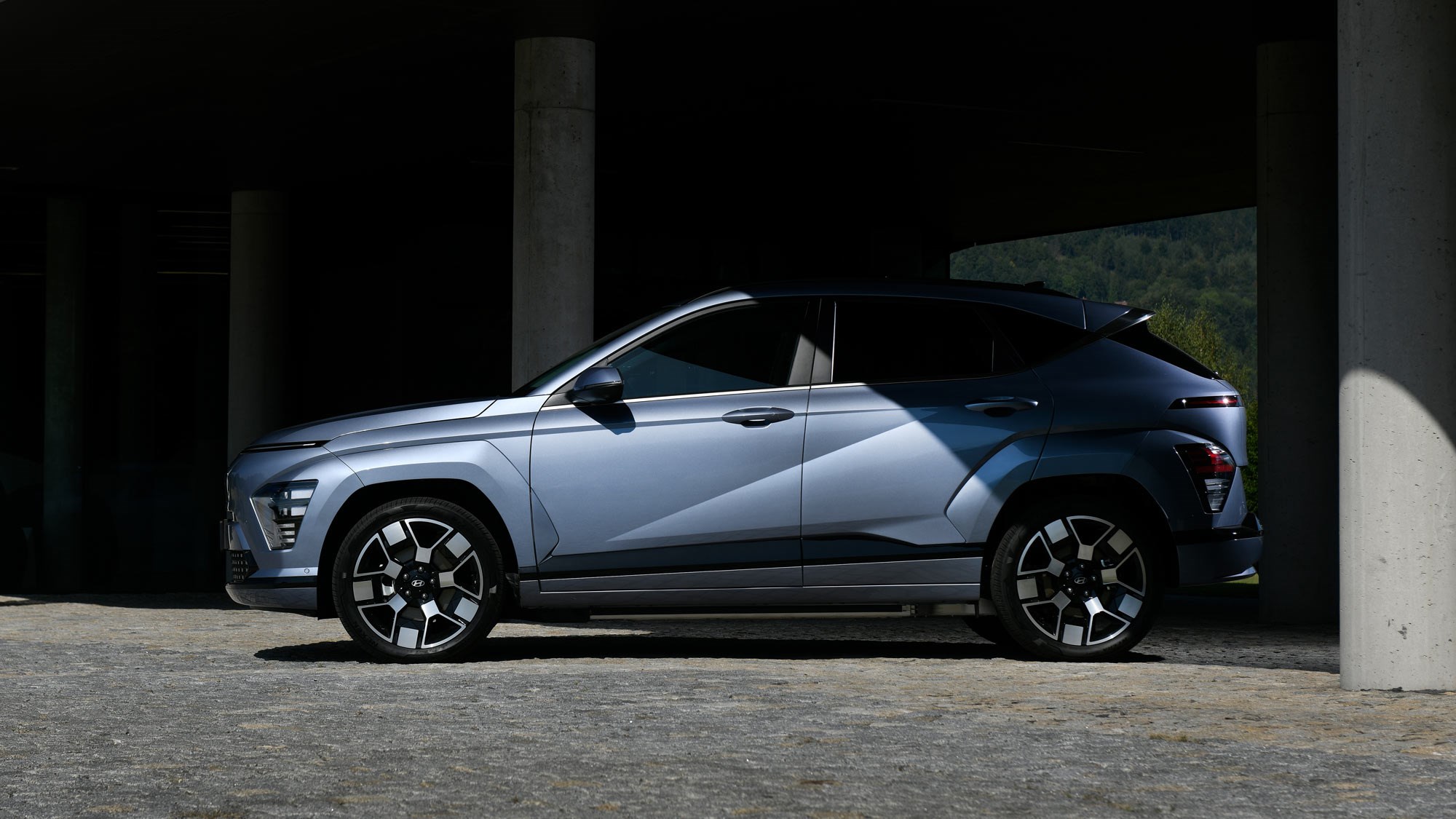
A lot of drivers, we fear, will be going menu diving to turn this stuff off every time they start the car (it resets after every journey; of course it does). Fortunately, among the intelligent user-experience decisions Hyundai has made here is a customisable button on the steering wheel that can be set to take you straight to the relevant infotainment screen.
How’s the rest of the Kona Electric’s interior?
A mixture of modern cliché and 1990s hi-fi. Atop the dash sits a pair of 12.3-inch screens, adjoined at the hip to create one large digital panel – one half replacing the instrument cluster, the other the infotainment system. All reasonably clear and easy to understand, though in case that’s too far to look away from the road, only the entry-level Kona Electric does without the additional 12.0-inch head-up display projected directly in front of the driver.
Beneath the central screen is a row of silver buttons – which aside from looking like they’ve been looted from the aforementioned audio equipment give you instant access to the main infotainment functions. Just like the good old days. You’ll need to get used to which button is where, as they’re all the same shape, but otherwise by modern standards this is brilliant.
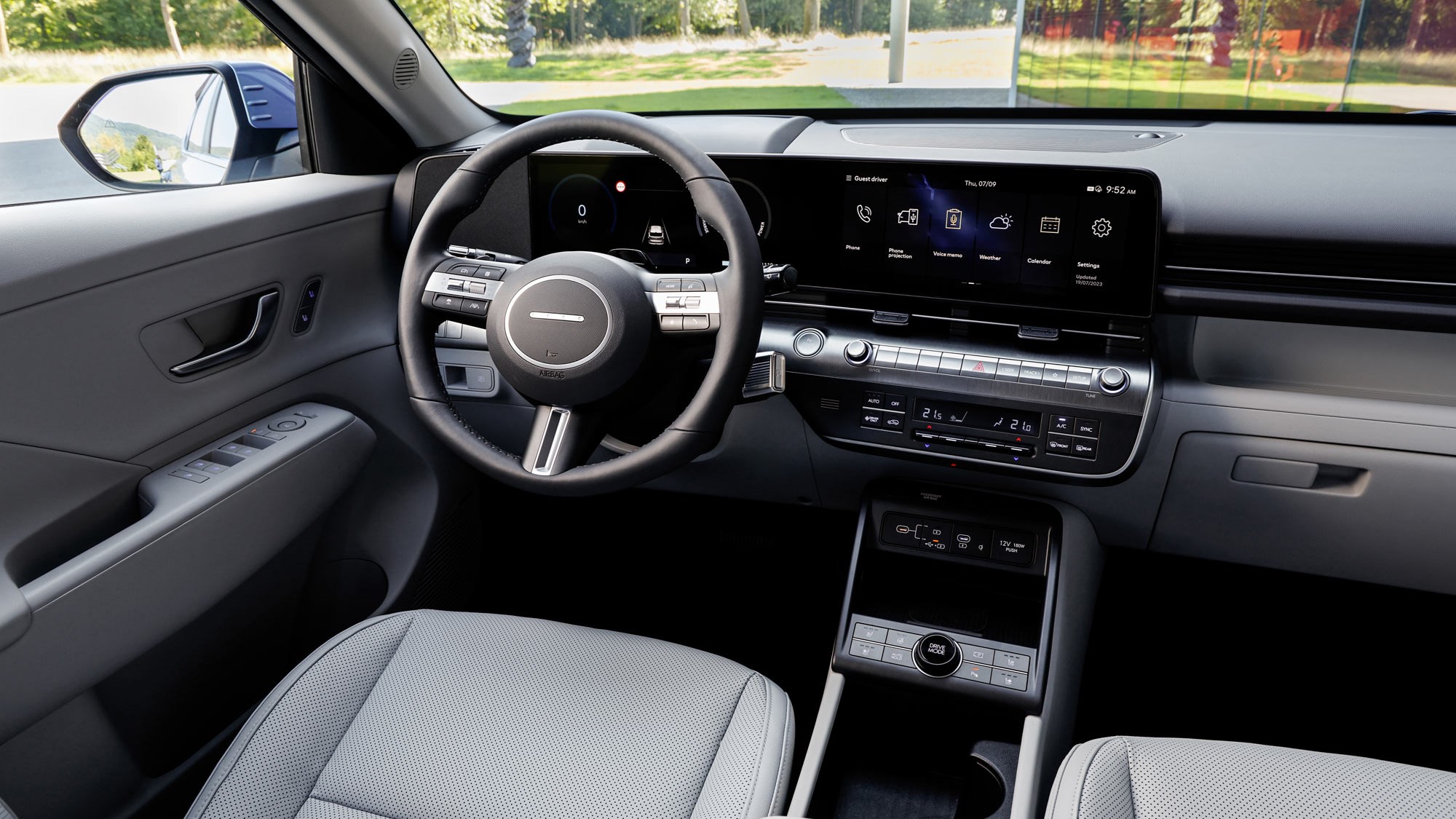
Keeping up the good work, below that there’s also a proper climate control panel, so no fiddly touchscreening is necessary to adjust the fans. You’ll also find a host of power plugs in this area, plus a wireless phone charger on most models.
Less conventionally – though becoming increasingly common as the manual gearbox breathes its last – the gear selector has moved from the centre console to the steering column. This is clearly marked and easy to use, but feels a bit cheap. An accusation that can also be levelled at the many of the other lower panels inside the car. Actual build quality seems robust, though, with no shakes or rattles shown up by the relative silence of the electric drive system.
Neat tech includes the blindspot cameras – which rather than replacing the conventional mirrors entirely give you a view down the relevant side of the car via the digital instrument cluster whenever you use the indicators. This is familiar from various higher-end Hyundai, Kia and Genesis models but still nice to see in a b-segment SUV.
The second-gen Kona Electric also features Vehicle to Load (V2L), so comes with a domestic power socket in the back of the centre console. The Honda e and a number of other electric cars have this already, but again, it’s nice to see.
And it’s more spacious?
Absolutely – you can seat four six-footers inside the Kona Electric now quite comfortably. There is technically a fifth seat in the middle of the bench, but this is firmer and less inviting and very much better left to occasional use than considered a constant feature.
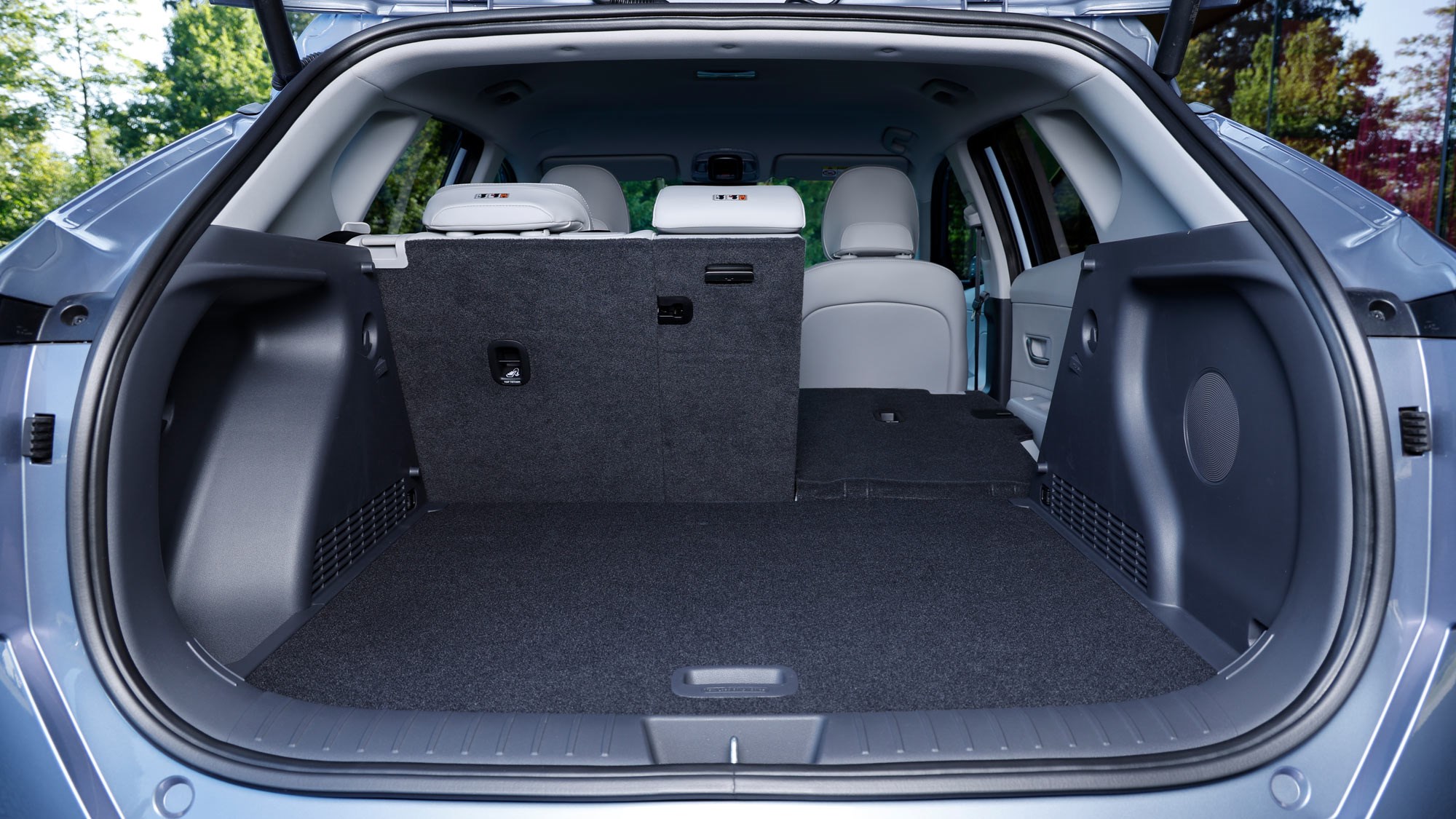
The boot is also much larger, going from the previous 332 litres to a far more useful 466 litres. Plus, there’s now space under the bonnet to store the charging cable. Win, win.
How much is the Kona Electric?
Prices start at £34,940, which takes a little getting your chops around but ultimately isn’t too surprising for a new electric SUV with this level of capability and an extensive amount of standard equipment. However, you probably really want the bigger battery, and that starts at £38,595.
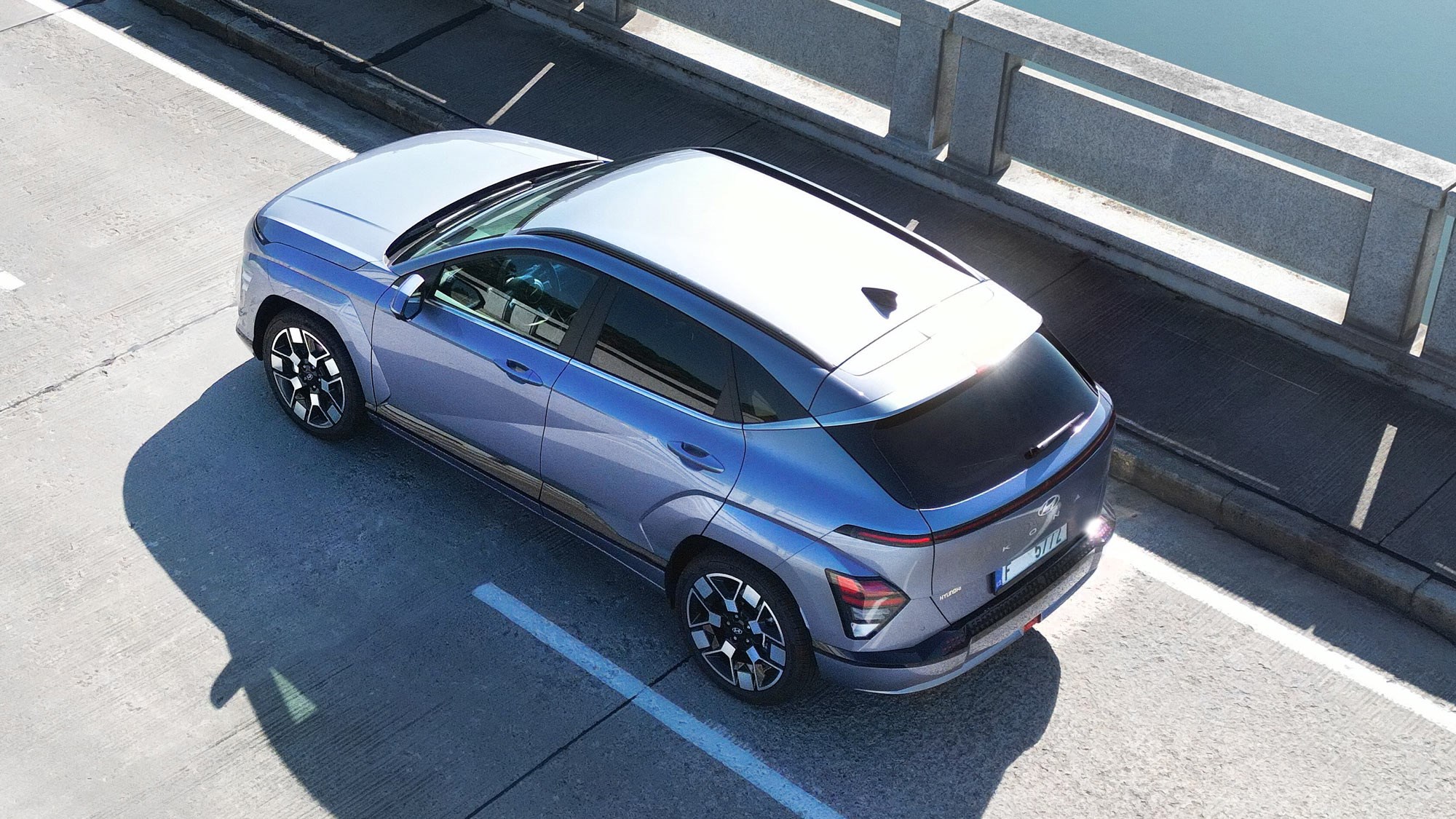
There are four trim levels, and the most expensive model is £43,095. This comes with almost everything you could feasibly want and expect from a small SUV, though you will still have to pay more if you want to unlock and start the car with your phone or smartwatch, or get it to drive in and out of parking spaces remotely using the key.
This Lux Pack, which is available on N Line and Ultimate variants, also includes a heated charge port door so you don’t get frozen out during winter.
Hyundai Kona Electric: initial verdict
We need to get our hands on one for a longer period in the UK to check out the driving range claims and verify the suspension really can cope with our buttery-smooth tarmac. But at first encounter this is a soundly pragmatic small SUV that brings improvements in nearly every area over the previous version.
It’s a shame it’s not a little more exciting to drive, but we imagine most buyers will be happy to trade this for the additional space and the sheer good sense exhibited by the interior design. The tech you can get really is quite impressive for this class, too.